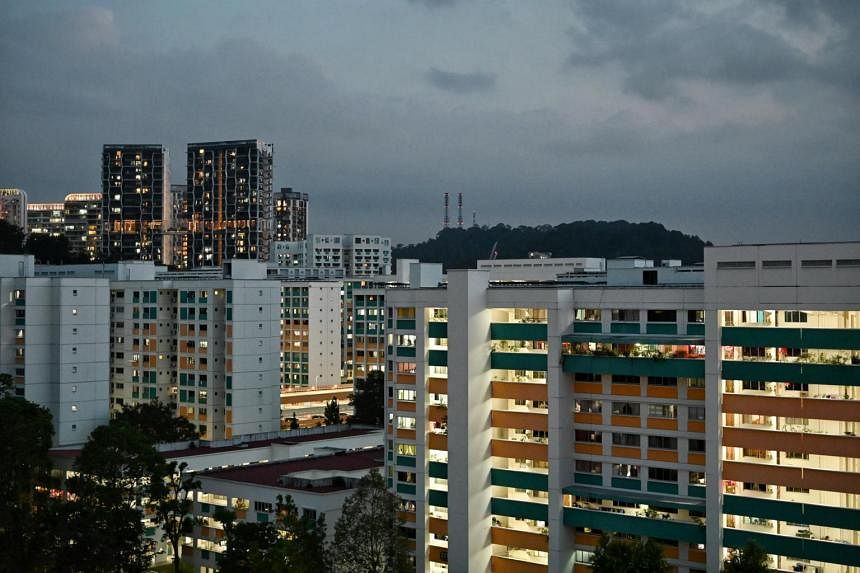SINGAPORE - Only a small fraction of around 300,000 households living in one- to three-room flats have used vouchers given to them by the Government to help them offset the cost of buying energy-efficient appliances - which can lower their electricity bills.
Since late 2020, each one- to three-room Housing Board flat household can redeem three e-vouchers worth $225 in total. They comprise a $150 voucher to buy energy-saving refrigerators, a $25 voucher for LED lights, and a $50 voucher for water-saving shower fittings.
This means that 300,000 flats can redeem 900,000 vouchers in total.
As at May this year, about 23,000 e-vouchers have been redeemed - of which 11,700 were for refrigerators, 7,600 for LED lights, and 3,700 for shower fittings, said the National Environment Agency (NEA), which runs the scheme with national water agency PUB.
The e-vouchers under the Climate Friendly Households programme are valid till Dec 31 next year.
Eligible households can redeem the vouchers through the programme's website.
Under NEA's Minimum Energy Performance Standards, appliances are rated with up to five ticks which are shown on labels pasted on the products being sold. More ticks indicate a more energy-efficient appliance.
An appliance with at least three ticks is deemed energy-efficient and can be bought using the vouchers under the scheme.
Energy-saving appliances tend to be more costly compared with ordinary ones.
While the programme aims to help homes reduce their carbon footprints, it also helps them reduce their utility bills amid rising electricity prices.
Households can save between $40 and $120 annually by switching to such appliances, said NEA on its website.
It was announced on June 30 that the electricity tariff here would be 30.17 cents per kilowatt-hour for the next three months - an 8.1 per cent hike from the last quarter.
For three-room flats, the tariff jump is expected to add an extra $6 to each household's monthly bill, on average.
Electricity prices have been soaring globally since last year, due to factors including the unanticipated demand for gas from pandemic recovery, reductions in global gas supply, and the rippling effects of the Russia-Ukraine war.
When asked if the programme's deadline may be extended to raise the take-up rate of the e-vouchers, NEA said that as the vouchers are valid for about 18 more months, households are likely to save the vouchers until their appliances are due for replacement.
"We will continue to monitor the take-up rate of the vouchers and review the programme at an appropriate juncture," the agency said.
Meanwhile, NEA and PUB will continue to reach out to eligible households to raise awareness about the programme.
This will be done through posters and digital display panels at community centres and HDB blocks, and through roadshows, for instance.
Mr Yeong Choon Hong, 46, who lives in a three-room flat in Woodlands with his family, opted for the e-vouchers in mid-2021 to buy eight LED bulbs and two water-efficient shower heads, which cost about $120 in total.
The maintenance manager already owns energy-efficient models for his refrigerator, washing machine and television.
He said that after replacing the lights and shower heads, his monthly electricity and water bills dropped from $85 and $100 to $70 and $85.
But with the hike in electricity prices, his electricity and water bills are currently $80 and $100. Still, he manages to save about $5 on each bill compared with before replacing the lights and shower heads.
Mr Yeong lives with his wife and two children, aged eight and 12. He added that staying on a fixed-rate electricity plan and adopting more energy-saving habits at home have prevented his electricity bills from rising further.
"We increased the air-con's temperature to 25 and 26 deg C, from 23 and 24 deg C. We turn the air-con on an hour before bedtime, and turn it off after the kids fall asleep," he added.
Dr David Broadstock, who heads the energy economics division at the National University of Singapore's Energy Studies Institute, noted that heating and cooling devices, such as water heaters, air-conditioning and refrigerators are the largest energy guzzlers at home.
"One thing households need to be mindful of is that when saving money from using energy-efficient appliances, some will use that saved money on other goods and services, which may themselves use energy. This can create a rebound effect," he added.
Mr Sasthitharan Gopal, 29, who lives with his grandmother and mother in a three-room flat, said he had not paid attention to how many green ticks there were on the energy labels on the appliances at home.
"When buying a washing machine or refrigerator, usually what I would look at are the features or the size. We try to limit the usage of appliances to keep our bills manageable. I am not sure if I am going to save much just by changing (to energy-efficient models)," said Mr Sasthitharan, an administrative assistant at a dormitory.
Mr Mohamed Jairzinno, 48, a private hire driver, lives with two children in a two-room flat in Toa Payoh and he spends about $130 on water and electricity bills.
Mr Jairzinno is aware of the vouchers but chose not to redeem them.
He said: "Even with a voucher, I will still need to fork out (money). And if my current appliances are working fine, I am not going to spend extra money to change them. If I were to use the voucher and go buy a fridge now, I will have $200 to $300 less to spend on necessities for the month."


